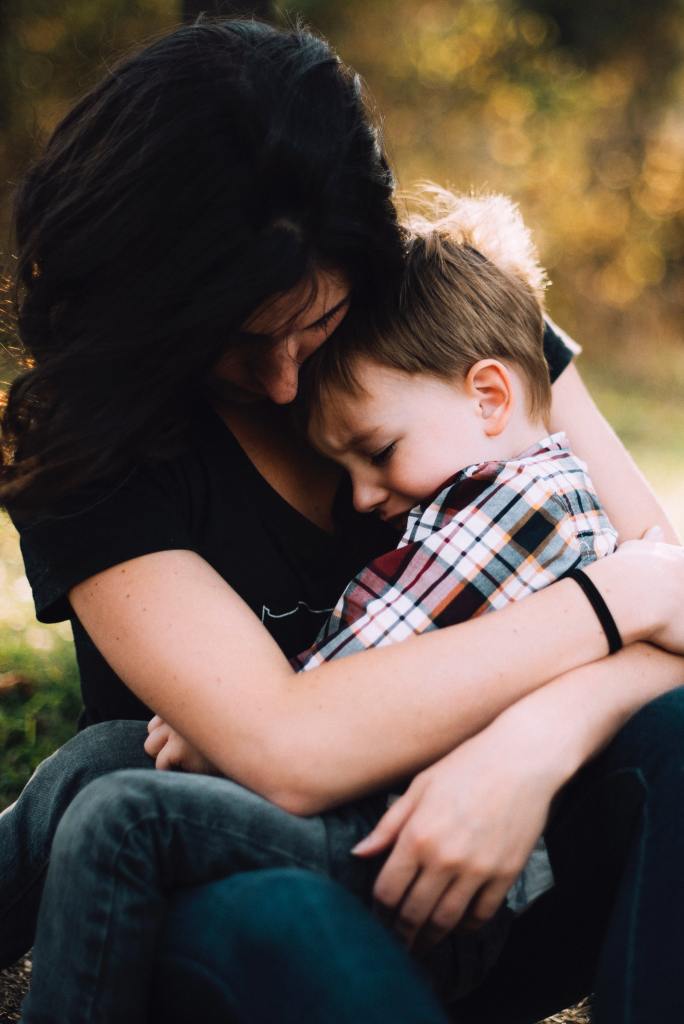
Last week I did not imagine writing a blogpost on this subject, but here we are. I’m grateful that my days of parenting alone are over, and equally grateful that my son Peter is now a teenager who doesn’t need quite as much from me as he did a few years ago, and very grateful that I can work from home, though frankly, that’s rarely my preference. All the same, I’m grateful.
Still, there are three of us in roughly 650 square feet here in Brooklyn, and my husband, who always works from home, is having to make significant accommodations. Our son is a junior in high school; remote learning is set to begin for him next Monday. I have just begun a new job (this is week 3!) and the rhythms of my day are still being set and informed by this unprecedented (in my lifetime) event, and how we continue to be the Church, even when, or especially when we cannot gather.
As I write, the four-year-old in the apartment upstairs is racing back and forth across the hardwood floors. At the moment, the rhythm of his footfall makes me smile, but ask me again tomorrow, or even later this afternoon. It’s sunny and cold today; we are pledged to go outside for a neighborhood walk later no matter the weather or our inclination. It’s part of how we will take care of ourselves and be aware of God around us. By next week we’ll have graduated to a family schedule, but for now, having mealtimes and bedtimes and time outside feels like an accomplishment.
Previously, I’ve written about Finding God in Difficult Times, and some of what I shared in that post for families with younger children will be helpful in this context:
- Comfort your children, assure them, be with them.
- Be clear that God did not cause this illness–or any other crisis, accident, or disaster. In times of trouble, we remember God is with us. As God has throughout human history, God acts through those who are doing God’s work in the world. God acts through us.
- Tell them that it’s okay to feel whatever it is that they are feeling. Help them name what they are feeling. Tell them what you are feeling, too, and don’t be afraid to show your emotions.
- Make sure they understand nothing that has happened is their fault.
- Tell them what they need to know as clearly and simply as you can. The facts surrounding traumatic events are far better coming from you than from any other source.
- Limit their exposure to the news and/or adult conversation.
- Listen to their questions. What they are actually asking is not necessarily what we think they are asking.
- You are allowed to say that you don’t know or that you don’t understand either. It’s healthy and helpful to let your children know that you don’t have all the answers.
- Try to maintain as normal a routine as possible. This will help you as well as your children, if some things in an otherwise chaotic time can remain the same.
I am mindful that even now, with a teenager, I need to be careful how we share information about the pandemic, about changes to our daily routines, about my own fears. My son overheard me tell a colleague over the phone that I was brought to tears listening to the mayor of New York City discuss the closing of schools here for at least a month and possibly through the end of the school year. That to do so seems less of a risk to the health and safety of vulnerable students than keeping schools open brought this public health emergency to a whole new level for me. Peter asked me later to unpack my reaction with him. It’s important that I can feel what I feel and not hide it from my family; it’s also important that my son doesn’t take on my anxiety as his own. This recent New York Times article has five helpful suggestions for parents of anxious teens in the age of coronavirus.
Prayer, of course, is a way of giving over to God what we can’t hold by ourselves. We could use the uncertainty of these days as an opportunity to become intentional about prayer, or to simply remember that with intention, anything can become prayer. In that neighborhood walk, we can pause and bring to mind those whose lives touch ours. We can make and send or drop off cards for those we can’t now visit. We can doodle our prayers. If saying grace is something you usually reserve for Thanksgiving dinner, try a mealtime prayer. There’s a wonderful new book by Episcopal priests and school chaplains Jenifer Gamber and Timothy Seamans called Common Prayer for Children and Families with prayers for all occasions, including a short set of devotions for morning, noontime, and evening that are ideal for right now. Illustrated Ministry has special resources for families to download weekly here.
Preteens and teenagers might enjoy making a playlist of music that comforts and inspires them to share with family and friends. In the books we are reading aloud or together, and in the TV shows or movies we are watching as a family, we can ask, “Where is God in this?” And whether or not we actually mention God, the big questions of how we should live are present in almost everything worth watching these days, from Brooklyn 99 to The Good Place, Frozen 2 , The Mandalorian, and Knives Out. Let’s ask the big questions, and listen to what our kids have to say in response.
Please do get outside! Fresh air and sunshine are good for us, and bad for this virus. Many people find God in nature more easily than in church. The word quarantine means forty, and this season of Lent began with the story of Jesus’s forty days in the wilderness. Lent means lengthen, and in these lengthening days for those of us in the Western Hemisphere, signs of spring make us aware of God’s presence and bring us hope. The seasons and the liturgical year are gifts right now, giving us a different way to measure our days.
What are you doing that’s working for your family in this challenging time? What resources would be most helpful to you at home or in your ministry? Please let me know in the comments, or feel free to email me.
God of the present moment,
God who in Jesus stills the storm
and soothes the frantic heart;
bring hope and courage to all
who wait or work in uncertainty.Bring hope that you will make them the equal
of whatever lies ahead.Bring them courage to endure what cannot be avoided,
for your will is health and wholeness;
you are God, and we need you.-Adapted from A New Zealand Prayer Book, p. 765
Wendy Claire Barrie is the author of Faith at Home: A Handbook for Cautiously Christian Parents.


 Between now and Christmas Eve, I will have tied red ribbons on 500 bell ornaments, found and purchased 4 sheep hats, organized, rehearsed and directed a Christmas pageant with 48 participants, organized, rehearsed and supervised a nativity parade with 15 giant 12 to 8 foot puppets, finished shopping and wrapping gifts for my family and friends, and participated in four church services at three different churches. You are exhausted just reading this, aren’t you? There’s also laundry and, please God, some tidying around the apartment to do. Don’t feel sorry for me, though. I have lots of help and so will mostly be joyful and very tired.
Between now and Christmas Eve, I will have tied red ribbons on 500 bell ornaments, found and purchased 4 sheep hats, organized, rehearsed and directed a Christmas pageant with 48 participants, organized, rehearsed and supervised a nativity parade with 15 giant 12 to 8 foot puppets, finished shopping and wrapping gifts for my family and friends, and participated in four church services at three different churches. You are exhausted just reading this, aren’t you? There’s also laundry and, please God, some tidying around the apartment to do. Don’t feel sorry for me, though. I have lots of help and so will mostly be joyful and very tired.